If I were asked to do a test to qualify as a "River Rat," I probably would pass hands down. From the age of nine, I grew up on No. 9 Island, when there were no occupants other than my family and cottagers in the summer. We lived on No. 9 all year and in all seasons.
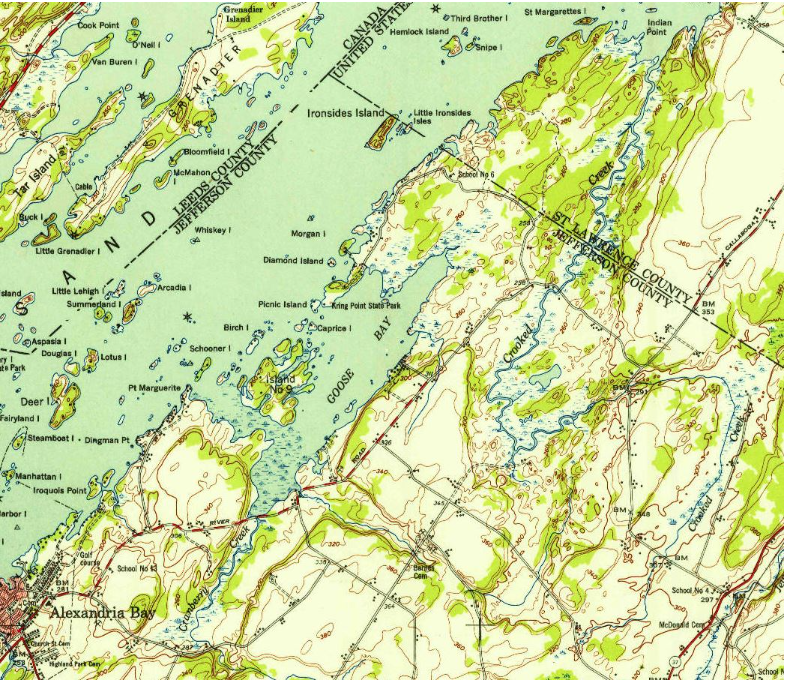
The Adventures Were Many!
I thought nothing of walking across the ice from the island to Dingman Point to go to school in Alexandria Bay. Sometimes, it would be with my stepfather, or sometimes, it would be me alone. On many occasions, I would get off the school bus at Estes' and start walking down to Wagoner's and proceed across the ice and marsh. I remember walking on ice that was so thick and so dark that I could see fish swimming under my feet deep down.
Once, I was written up in the Syracuse Post Standard, "Bay Girl snowshoes 3 miles a day to go to school." We had a utility boat, an Arkansas Traveler, with a 25-horse Johnson motor. If the ice was not safe to walk on all the way to the mainland, or to drive on, we would drag the boat to open water and jump into it out by Birch Island. If the ice was thick enough, we had an old truck on the island that we would drive back and forth to Dingman Point. The water between Buck Point and Marsh Island was never that deep, so once, when we went through the ice, I just crawled out through the window!
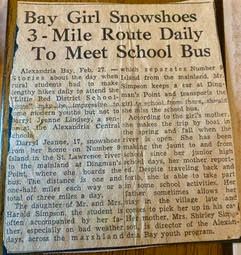
I don't recall the model or make of the other boat we owned, but it was a beauty. It was long and narrow, wooden, with a side steering stick, and the motor was enclosed in the cockpit. I do remember coming down the River near Dingman Point on a very dark night, with just the moon glow for light. There is a little island that blends in with the mainland. We got very close to it and sideswiped the shoreline rocks. I was thrown to the side of the boat, but fortunately, stayed in it.
Another Memory
Being a girl on an island, I had to find ways to entertain myself. We had no TV, and our electricity for a long time was from a Kohler generator. From what I remember, the island is, give or take, a mile long and a half mile wide, and there were a lot of woods. At the south end of the island is a jut of land that we call the half-moon. I would walk there with my Daisy Air Rifle and shoot pinecones off the trees. I had a favorite fallen pine that was so huge that I made it my private hut. In the winter, I would shovel my own skating rink far enough out to where the ice was smooth. I had skis and plowed down the hill beside the house, but the problem was no lift.
Going out behind the house, we had paths that went over to Goose Bay. There was a man, Gene Russell, who I often visited just to hear his stories. We called him “the hermit". He lived there in a very small one room cabin. The rocks on the ground by his cabin had natural holes, and he would preserve food in them. I can't be positive what the contents were, but fish or eels come to mind.
I had a little rowboat that I would use to catch perch, which is still a favorite. Bull-heading was an adventure back then. We didn't fish the shores; at nighttime we would put a big bucket in the middle of the boat, with lanterns, bamboo poles, and the night crawlers we had collected and go around to Goose Bay. It didn't take long to fill that bucket.
When I think back to what I used to do by myself, few would be doing it today. I was usually the first one in the water in the spring before Memorial Day, taking my little rowboat down to a shoal and jumping into the water.
I could not participate in after school events as there was no one to pick me up and visiting friends were few and far between, unless they had a boat. Tip up fishing was easy, as I could set the tip ups and then go inside the house to watch. If I was quick enough to get to them, I would have a fish. We had two geese, one grey and one white. Benjamin Franklin and Martha Washington. They were my protectors. With visitors being rare to the island, whenever a person did appear and I was out with them, those people were chased and honked at by the geese and sometimes even nipped.
Often in the summertime, I would take the boat over to Tar Island to visit friends. There were big sand dunes on that island at the time. I am not really sure if they are still there or if they have been destroyed either by weather or modern-day construction. I was crossing the big seaway channel then – I wonder if parents would allow that now?
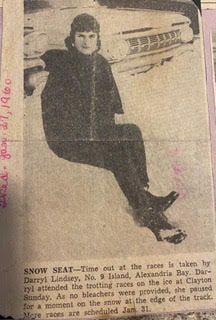
More Memories
I remember going to an island restaurant called Heffernan's for chicken, biscuits, and pies, or taking the boat over to Rockport, ON, for black diamond cheese. It's not so easy today.
The house was destroyed by fire in the fall of 1979. Years before, it had been an operating farm. The house had a large eat-in kitchen, with a round oak table and a huge picture window that gave a view of the barn. There was a downstairs dining room that was later made into a bedroom, and a large living room with double french doors that led to a parlor with a fireplace.
There were taxidermy fish and game birds mounted on the walls. The room also had a player piano. Both the parlor and the living room had doors leading out to a long enclosed porch with a bed swing at one end, where I would sleep on hot summer nights. Upstairs, there were five bedrooms and a bath. Some of the bedrooms looked out onto the River and channel.
I used to hear the blasts of the big ships and watch them moving up and down the River, all lit up at night, and hear the sounds of crickets, bullfrogs, owls, and the unmistakable sound of the whip-o-wills. In the cellar was the huge wood furnace and next to it, tall stacks of wood logs that we had split and stored. There was also a natural spring where we would keep fish we caught and an old canning cellar with shelves where we would keep all the home canned goods and big crocks of homemade sauerkraut weighted down with a plate and a rock.
We had a basement resident, a muskrat that we named Morris. He had a secret entryway and lived there in the winter for a couple of years. He learned that if he scratched on the door, a carrot would magically get thrown down the stairs. In the spring, he would leave for his muskrat house.
I remember watching the dredging and drilling for the St. Lawrence Seaway. Directly out in front of us, toward the Summerland Group, were the construction barges. The Great Lakes-St. Lawrence Seaway is a deep draft waterway extending 3,700 km (2,340 miles) from the Atlantic Ocean to the head of the Great Lakes and into the heart of North America. The St. Lawrence Seaway portion of the System extends from Montreal to mid-Lake Erie.
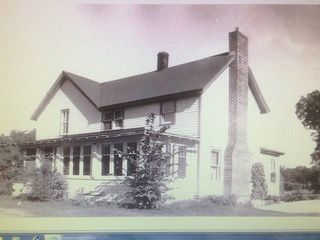
When you are brought up on the St. Lawrence River as I was, no one can take the River out of you. You have become a River Rat. Over the years of living in different places, coming back to visit is a must, a place to calm the mind. Supposing I could have found a little piece of rock to put up a tiny cottage, that would have been the ideal. I have become a Lake Ontario resident right around the corner and live on the water . . . but it's not the same, by any means, with no ships going by blasting their horns. However, I can hitch a ride with other River Rats to get my fix!
By Darryl Jeanne Lindsey King
Darryl Jeanne Lindsey King lives on Lake Ontario at Pillar Point in Dexter, NY. She is a retired medical assistant and like other snowbirds, flies south to live in Punta Gorda, FL in the winter months. She had two children, Jeffrey Wood and Steven Wood both living in Watertown, NY.
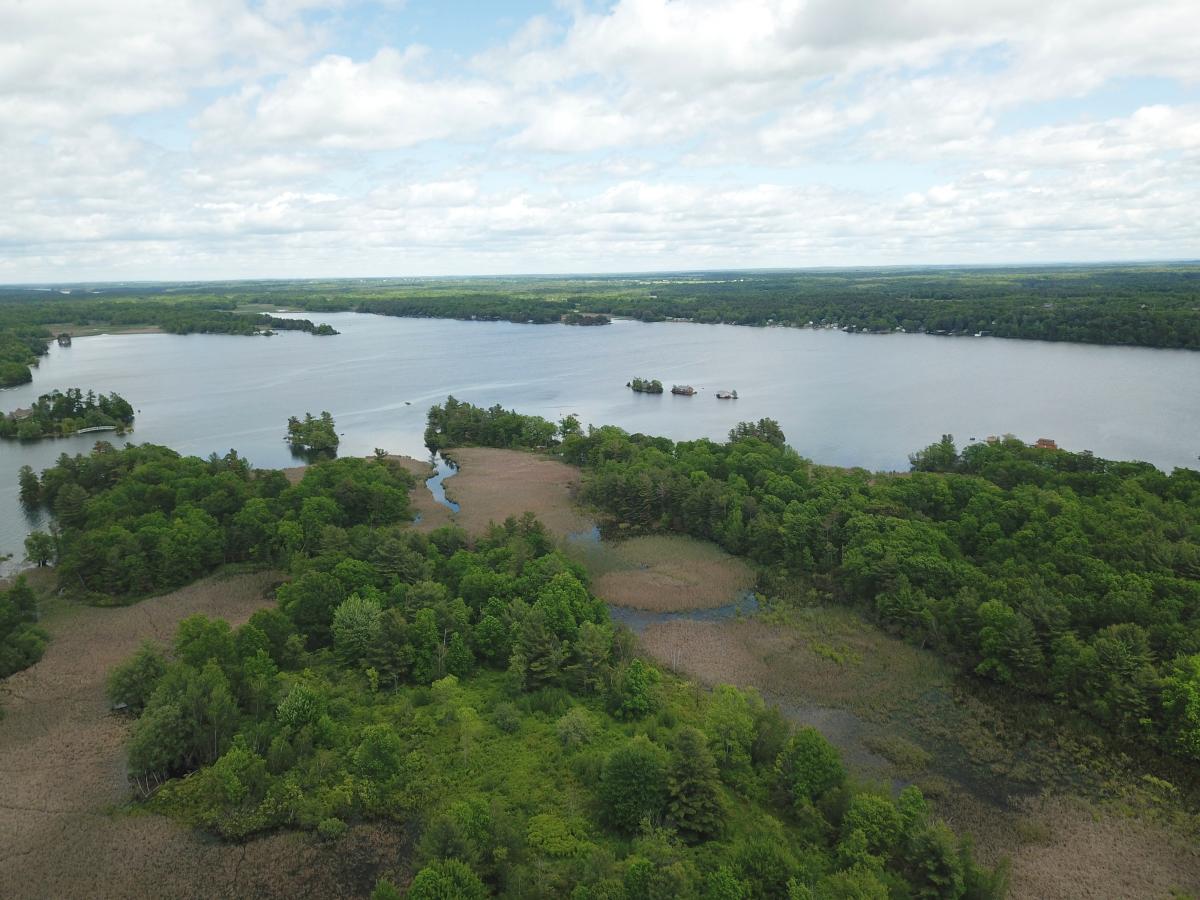
For more information about Island No 9, please read TI Life's January 2022 article written by Spencer Busler.
Posted in: Volume 18, Issue 12, December 2023, History, People, Places
Please click here if you are unable to post your comment.
